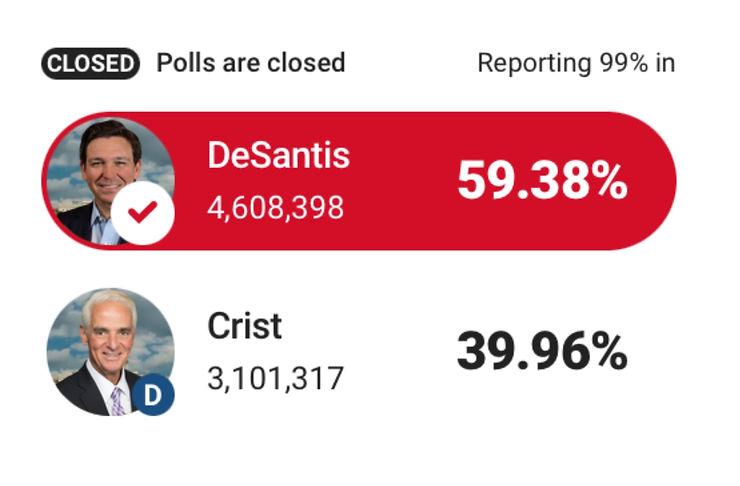Every year we walk to a polling place on Election Day. It's hard not to wonder just why elections happen on a set day. Why is Election Day the first Tuesday after the first Monday in November? And how have our voting methods changed throughout history? Well, we certainly haven't always used voting machines to cast our votes.
Why is Election Day a Tuesday in November?
Americans first began the custom of weekday voting in 1845, when Congress passed a law designating the first Tuesday after the first Monday (simply the first Tuesday - provided November 1st did not fall on a Tuesday) as the set day for elections.

Before 1845, states were allowed to hold elections any time they wished within a 34-day period before the first Wednesday in December. This method of voting had some very crucial flaws, however. The states that held elections early could possibly change the opinions of those in states who had later elections; consequently, those last minute voters could change the whole outcome of the elections! Congress created Election Day as a solution to these problems.
But why Tuesday? Why November? The answer comes from America's agricultural population in the 1800s. Almost the whole population of the U.S. was made up of farmers. In choosing a day for the elections, lawmakers had to keep in mind that the farmers lived at least a day travel from their polling place. Weekends wouldn't work since most people spent Sunday in church, and Wednesday was market day. Therefore, Tuesday seemed like the most convenient day for holding elections - with Monday as travel day.
The farm life also tells us why Election Day is always in November. If it was in spring or early summer it would interfere with farmers' planting season. Late summer and early fall was harvest-time. Then, late November until spring-time was too cold for travel. There was only one option left: early November.
Although in some states Election Day is a civic holiday, many people have called for it to become a federal holiday so people can vote without missing work.

How Voting Methods Have Changed Throughout History
Voting has also undergone a considerable change throughout history. From open-air voice voting to the paper ballot, and now the familiar voting machine - voting hasn't always gone smoothly (remember 2020?).
For the first 50 years of American elections, most voting wasn't done in private. Everyone could see - or rather hear your choices. The method used in this time of history was called voice voting.
This was definitely not an inconspicuous manner of voting, but it was an easy way to cast your vote. Elections were held at the courthouse, and a judge would have the voters swear on a bible that they had not already voted, and they were who they said they were. Once sworn in, the voters would call out their names to the clerk and announce their chosen candidates.
Since in the time of voice voting, campaigning and partying were allowed at the polling places, a very carnival atmosphere often went with early American elections. This may explain why the turnout was as high as 85 percent!

The next type of voting in American history is much more familiar: the paper ballot. Paper ballots began appearing at elections in the early 19th century, but they weren't the same ballots we know today. These ballots of the 1800s weren't even printed by the U.S. government! In the very beginning, paper ballots were nothing more than a scrap of paper where the voters could scrawl their candidates' names and drop in the ballot box. Soon after, newspapers began printing blank ballots with the title of each office up for re-election which readers could tear out and fill in with their candidates.
Then the political parties started printing their own paper ballots, with only their party's candidates' names on them. This made it easier than ever for party faithfuls to vote straight down the party line.
Next came a new form of paper ballots: the Australian Paper Ballot. There had been calls for election reform, since the current paper ballots had often led to accused voter fraud. The answer came from Australia in 1858, which was the first country to use paper ballots actually printed by government officials. These ballots were printed with the names of all the candidates and were handed out to voters at polling places. The U.S. adopted this method for the first time in 1888.

The second to last venture of voting was one of the greatest inventions: the voting machine. This voting machine was different from the ones we know, since it used levers to count votes. This voting machine was invented by Jacob H. Myers in the late 1800s. It was one of the most complex inventions of its time and would come to dominate American elections from 1910 through 1980. The invention was made up primarily of levers, not to mention the many mechanisms inside. Each of the candidates had a lever beside their name. A voter merely had to pull down the levers of their chosen candidates. If they wanted to vote all Republican or all Democrat, there were levers that would automatically select all one party's candidates. There was a final lever the voter pulled at the end of voting to complete the process.
Then, lastly, there are our current-day voting machines. They have a digital tough screen where we select our candidates. Voting could never have been easier than it is today. To the contrary, these machines could never be easier to program to create fraud. Nevertheless our voting machines have made it easier to vote.
Conclusion
Election Day as well as voting has had an interesting history. From a Tuesday in November to voice voting and paper ballots; fraud, as well as fairness has had its place in America's history.


well done! Very interesting blog post!